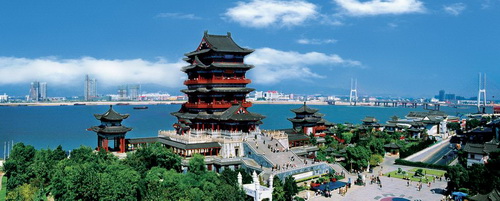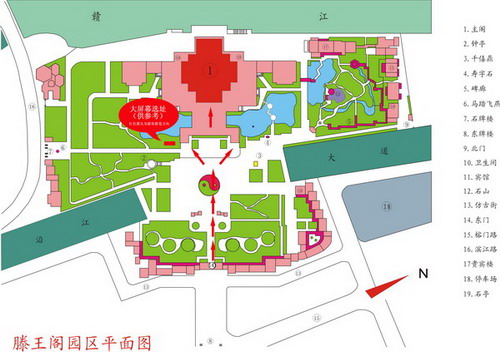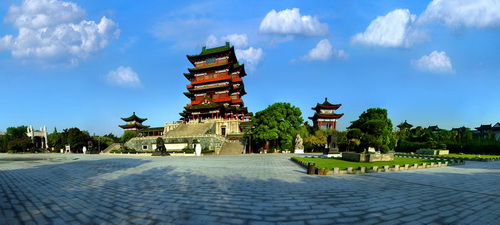Lofty Lushan Mountain
Temples in Hidden Places
On the First of August
Wheels by the Water
Share your travel story with regional@chinadaily.com.cn
Tengwang Pavilion
( travelchinaguide.com )
Updated: 2011-09-13
 |
|
Tengwang Pavilion is renowned as one of the four most notable pavilions in China. |
|
|
Tengwang Pavilion, or Pavilion of Prince Teng, is located on the shore of the Gan River in Nanchang city, Jiangxi province. Tengwang Pavilion, together with the Yellow Crane Tower (Huanghe Lou) in Wuhan, Hubei province, Yueyang Pavilion in Hunan province and, Penglai Pavilion in Yantai, Shandong province, are renowned as four most notable pavilions in China. It also has the reputation of being the 'First Pavilion along Xijiang River' and has been widely admired by visitors from all over the world. In terms of its height, overall size and architectural style, this pavilion is a prime example of such buildings for which China is justifiably famous.
Li Yuanying, a brother of Emperor Taizong in the Tang Dynasty, who assumed the name Tengwang upon being knighted, commissioned the original three-storied, thirty –meter high building in the year 654 during the Tang Dynasty (618-907). The pavilion was named after him but it was to undergo reconstruction as a consequence of events during its 1,300 year long history.
 |
| The plane graph of Tengwang Pavilion scenic area |
Wang Bo, a gifted and well known poet of the Tang Dynasty, wrote his Preface to the Tengwang Pavilion. This piece made the Tengwang Pavilion a household name in China down to the present day.
However, probably the worst tragedy occurred in 1926, when it was destroyed by fire during the conflicts between the Northern Warlords. The current building is the result of rebuilding that was carried out between 1983 and 1989.
 |
| Charming night scene of the Tengwang Pavilion |
The existing pavilion is even more spectacular and magnificent than its predecessors. Reached by a Nine-zigzag bridge and surrounded by rock gardens and lakes, it is built in the architectural style of the Song Dynasty (960-1279). It is in fact a complex and not just a single structure. The principle building, covering 47,000 square meters (about 12 acres), is nine storied and 57.5 meters (about 189 feet) in height. Two smaller pavilions stand on the north and south sides of the main building. Their elegance and simplicity is set off by glazed jade-green tiles on the roof, pretty eaves and red pillars. Engraved screens enhance the interiors.
Tengwang Pavilion was always a place where learned men gathered to write articles and hold banquets, therefore the display in the new pavilion gives prominence to culture. A variety of bass-relief and frescoes demonstrate that men of talent have brought glory to this place. The plagues, steles, couplets on the columns of the hall are all selections of celebrities. Musical instruments, bronze sacrifice, ritual article, serial bells impart a classical elegance to this new pavilion.
 |
|
In terms of its height, overall size and architectural style, Tengwang Pavilion is a prime example of such buildings for which China is justifiably famous. |





 Admission ticket price:
Admission ticket price: Opening time:
Opening time: Tel:
Tel:  Website:
Website: